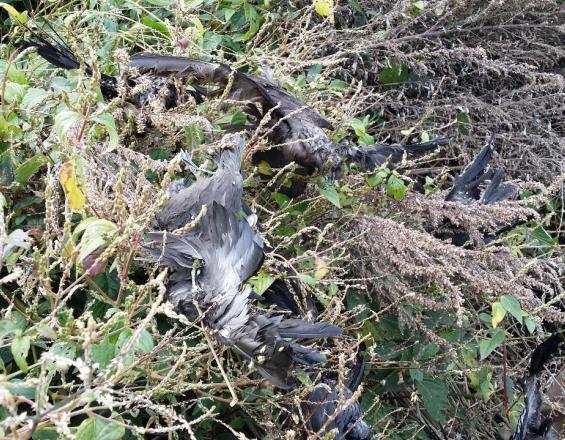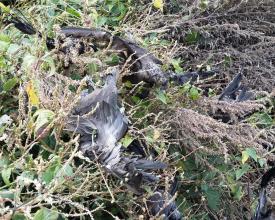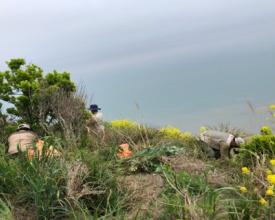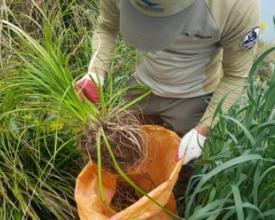
Restoration of seabird habitats in Chilbaldo island

Korea National Park Service (KNPS) has successfully restored seabird breeding grounds of Chilbaldo Island in the Dadohaehaesang National Park, which is a stopover site for over 50 species of rare seabirds.
The lighthouse in Chilbaldo island was operated until 1990’s, which allowed people and alien species such as Artemisia indica, Brassica juncea, and Miscanthus sinensis to the island. They have gradually prospered until they impeded the growth of native species, which prevent birds from making nests for breeding.
In particular, Achyranthes bidentata is a perennial plant that produces hook-shaped seeds in September and October. The wings of seabirds get entangled in them. It makes birds unable to flip their wings, driving them to death from exhaustion.
Since 2014, KNPS has been restoring the habitats by intensively removing alien species and planting the native Carex boottiana Hook. & Arn. to allow seabirds to make nests stably between bedrock and underplant roots.
Impacts
On the southern slopes of the island, where seabirds mainly inhabit, Achyranthes bidentata was removed before its fruits mature, and tall herbs such as Brassica napus and Cryptomeria japonica were rooted out. In addition, matured Carex boottiana Hook. & Arn. was planted on the site where introduced plants were removed. Nests were installed under the roots to help birds to habitat the environment.
Thanks to the continuous efforts for restoration of the breeding grounds, the death of seabirds which had reached over 400 by 2015 rapidly decrease to 23 in 2016, 11 in 2017, and 2 in 2018.
Now, Chilbaldo island became the largest Korean breeding ground for Synthliboramphus antiquus, where more than 2,000 pairs reproduce every year. More than 80% of Oceanodroma castro, which migrate to Korea in Spring and breed between June and October, lay eggs in Chilbaldo.
The value of Chilbaldo island has been widely recognized that it is designated as the Special Protection Zone of Dadohaehaesang National Park, the Natural Monument No. 332, the UNESCO Biosphere Reserve, the IUCN category Ia protected area, and the East Asian-Australasian Flyway Partnership site.
These restoration techniques focusing on natural resilience show a direction for ecological restoration of seabird habitats on uninhabited islands and provide new techniques and concepts for protected area management.






